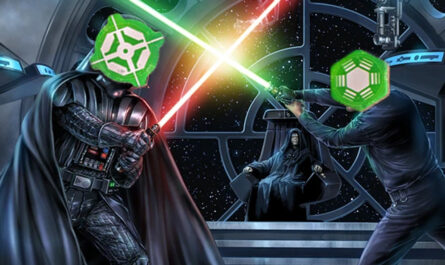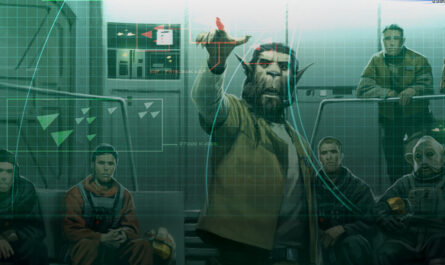In Star Wars Legion, army composition rules require a minimum of three core units. This restriction inherently benefits factions with high-quality core units, as it provides a strong foundation for building competitive lists. Conversely, for factions with weaker options, these core units become a liability that can heavily impact the overall effectiveness of the army. In this context, the Rebel Alliance emerges as one of the biggest losers. In this article, I’ll illustrate my points using the case of Rebel Troopers.
Welcome to the fourth part of “What’s Your Problem, Rebel Alliance?”, a series of articles analyzing the game design mistakes made during the creation of the Rebel Alliance in Star Wars Legion. This series is categorized under Carte blanche, meaning it represents a subjective—but well-argued—perspective aimed at providing constructive criticism.
The false start of the Rebel Troopers

Rebel Troopers are the quintessential core unit. They are to the Rebellion what B1 Battle Droids are to the Separatists: the backbone of the faction. Initially designed as the counterpart to Stormtroopers—rather than as units faithful to the Star Wars universe—the developers symbolically gave them the Agile keyword to highlight the importance of Dodge tokens in the faction’s strategy. However, given the significant disadvantages of Dodge tokens compared to Aim tokens, the need to rethink this unit has long been apparent.
A missed rebirth?
When the new version of Legion launched in July 2024, it presented a perfect opportunity to overhaul this problematic unit. Fortunately, Atomic Mass Games had the Rebel Troopers on their radar and used the V2 update to redesign them—or so we hoped:

Yeah “redesign” might be an overstatement… AMG retained the original profile and added the Nimble 1 keyword. While this free addition is welcome, it doesn’t address the underlying issues of the unit.
Now, you’re probably wondering…
Where’s the problem with Rebel Troopers?
Their resistance costs too much
The first red flag is the resistance of Rebel Troopers. It’s underwhelming, especially for a unit costing 40 points. To demonstrate this, we can calculate their Cost Per Point of resistance (CPPR). This metric indicates how much a unit “charges” for one point of resistance. The table below shows the CPPR of all core units in the game, ranked in descending order.
| Unit name | CPPR (for a vanilla unit) |
|---|---|
| Rebel Veterans | 8,00 points |
| Geonosian Warriors | 7,50 points |
| Pyke Soldiers | 7,33 points |
| Clones | 7,00 points |
| Rebel Troopers | 6,67 points |
| Fleet Troopers | 6,67 points |
| Shoretroopers | 6,50 points |
| Riot Squad Control | 6,25 points |
| Black Sun Enforcers | 6,25 points |
| Ewok Skirmishers | 5,56 points |
| B2 | 5,33 points |
| B1 | 5,28 points |
| Stormtroopers | 5,25 points |
| Snowtroopers | 5,25 points |
In theory, more resilient units should have a higher CPPR—it’s only logical: troops that do their job well deserve better pay. However, when comparing core units, an absurdity emerges: Rebel Troopers have a higher CPPR than almost all* red-save units. In other words, other factions have access to core units that defend better and cost proportionally less.
*The exception is Clone Troopers, but only because their CPPR is trickier to calculate. In reality, the Clone Troopers’ CPPR is lower than 7 points because it doesn’t account for the Reliable keyword or their ability to share Dodge tokens with allied units—two abilities that significantly boost their resistance.
In fact, it’s quite simple: excluding unaffiliated troops, every Rebel core unit is in the top 5 of the highest CPPR rankings. Champagne, anyone? 🥂
| Why is resistance so important? Whether in version 2.5 or 2.6 of Legion, resistance is a crucial metric for scoring victory points. The majority of objectives require you to contest or secure key points of interest. If your troops drop like flies, the only thing they’ll secure with precision is a spot in the graveyard! |
Their keywords are useless against a firing squad
The firing squad test evaluates a unit’s resistance against an enemy attack with no defensive tricks or cover. In essence, it estimates the chances your unit will survive before its activation when targeted by an enemy attack. Any white-save unit naturally performs worse than a red-save unit in this test.
Rebel Troopers fail this test spectacularly because their keywords are utterly useless in this scenario. Agile requires a Dodge token to trigger, and Nimble 1 necessitates a move (and thus an activation) to generate Dodge tokens.
| A counter-example One counter-example of a white-save unit that performs better against a firing squad is the Pykes. Their Independent: Dodge keyword grants them a defensive token when you leave them to their own devices. “Don’t worry about us, boss. We’ll save our own skins.” Plus, the more suppression fire they endure, the better they perform thanks to Danger Sense. |
Time-sensitive keywords and core units don’t mix
Agile and Nimble X are two keywords that quickly demand player actions to maximize their effects.
- Nimble X rewards players when they move a unit. Since this reward comes in the form of a Dodge token—a time-sensitive resource—it’s advisable to activate (or move) the unit as early as possible in the round.
- Having a Dodge token is essential to trigger Agile. Obtaining such a token often requires a command card, an activation, an action from another unit (Take Cover X), or additional points spent during list building. In other words, Agile has hidden costs, and ultimately, it’s a high price to pay for an ability that doesn’t guarantee any return on investment. Indeed, simply having a defensive token doesn’t ensure Agile will trigger. Let’s review the conditions:
- When defending,
- if you have a Dodge token ;
- and if no effect prevents you from using it (such as High Velocity) and if you use the token,
- and if your unit survives the attack ;
- then you gain 1 Dodge token.
- When defending,
In summary, Nimble X and Agile are keywords that make Rebel Troopers time-sensitive—a problematic trait for core units. During a game, your focus should be on your key units, not your core troops.
- “Don’t worry about us, Mr. Luke.”
- “I’d love to, but I promised your mothers I’d bring you back alive!”
—Excerpt from the film Saving Private Rebel
The result: cascading problems
To sum up, Rebel Troopers are a burden in your army list because their keywords push you to activate them quickly to keep them safe. You’ll need to protect them because they perform poorly against a firing squad. Poor performance in such situations becomes a major issue when you’ve paid a high price for their resistance.
What to do with your Rebel Troopers?
I won’t end this article the way some journalists handle climate change—depressing you for the sake of it without offering any concrete solutions. Sure, Rebel Troopers are disappointing, but Legion goes on. So, let’s put away the tissues and dive into practical solutions for your army lists.
Option 1: Minimize their impact
In this first option, we accept the unavoidable 120-point tax (40 points x 3 core units) imposed by list-building rules. With this in mind, we use Rebel Troopers in their barebones configuration (or close to it). The idea is not to increase their CPPR, thereby avoiding unnecessary weight on the tax.
An interesting list for this approach is to use your three core units as machine repair teams. Simply equip them with an Astromech Droid. This droid adds one health point to the Rebel unit, increasing its resistance to 7.5 and lowering its CPPR to 6.4 points, as this extra health costs less than an individual trooper’s value (=10 points = 40/4). Moreover, the droid can heal up to 2 health points on allied droids or vehicles, further increasing the resistance of one or more machines. For just 8 points, you essentially add 3 health points to your list—roughly speaking.
Option 2: Strengthen their profile
In this second option, we double down on Rebel Troopers. We invest heavily in addressing their weaknesses and build the list to support them. This means fully committing to the Dodge tribal strategy to bolster their resistance.
An interesting list for this approach is Aaron Smith’s army, played at the 2023 Lone Star Open. While the list was built for version 2.5 at 800 points, I’m confident it can be adapted for version 2.6.
Option 3: Pretend nothing’s wrong
Problems? What problems?
Option 4: Favor other core units
This is the obvious choice after criticizing Rebel Troopers so thoroughly. Unfortunately, the alternatives aren’t always much better:
- Fleet Troopers share two of the Rebel Troopers’ three main flaws: they have the same CPPR and their Charge keyword is useless against a firing squad. Additionally, their short-range blasters challenge you to close the gap with enemy units as quickly as possible. However, their version 2.6 profile now offers some action advantage.
- Veterans, on the other hand, hold the dubious honor of having the highest CPPR of any core unit in the game. To be fair, this CPPR is effectively lower in practice because the Low Profile keyword increases their resistance in certain situations. Against a firing squad, they perform slightly better in the first round than in subsequent ones (thanks to the Dodge token gained via Prepared Positions). However, since Low Profile requires at least light cover to trigger, caution is advised. Furthermore, when things go south, their low mobility will make it harder to find safety quickly.
Conclusion – Part IV
In this article, I’ve reviewed the problematic profile of Rebel Troopers. They’re a core unit that behaves contrary to what one expects of such a rank. Including them in your list without careful planning risks throwing a wrench into your army’s gears.
This inconsistent profile has been an issue since FFG’s days, but AMG has taken it a step further by refusing to rewrite it. What disappoints me most is that AMG has solidified the Dodge token as the tribal token of the Rebel Alliance for years to come. This playstyle doesn’t align with the faction’s identity—a subject I’ve explored extensively in Part 2 of this series.
But let’s not lose hope: many units are still awaiting their version 2.6 updates, scheduled for April 2025. Fingers crossed that these updates bring synergies with our dear (and costly) core units. And if the winds aren’t in our favor, so be it. The Alliance will remain my faction of choice, and I’ll always fight by its side!


